Leonardo Martinelli is a quickly rising star in Brazilian cinema. At age 26, he has already premiered two short films: Neon Phantom and A Bird Called Memory. These two poignant, topical, and artfully shot shorts have swept film festivals internationally, as part of official selections in Toronto, San Sebastián, BFI London, Clermont-Ferrand, Palm Springs, Montreal, and Santa Barbara. He is now working on his first feature length film, which was selected for the Locarno Residency and the Hubert Bals Fund. I sat down with this carioca auteur to discuss his work, the concepts that drive him, and the city that inspires him.
Inland from the postcard-ready views of Ipanema beach, the city of Rio de Janeiro holds a diverse and less traditionally picturesque series of landscapes. But in the postcolonial decay of Centro, or the sprawling handmade houses of Morro dos Prazeres, or the minimalist graffiti covered architecture of Zona Norte, a careful observer can find a type of beauty that is wilder and richer than any glittering blue coastline. It is in these overlooked and underappreciated corners of the city that filmmaker Leonardo Martinelli finds inspiration for his work. In solidarity, he pans his camera towards the parts of the city that the Travel Channel forgot, and turns them inside out, revealing hardship, complexity, and the fantastic.
After recently seeing his two films, Neon Phantom and A Bird Called Memory, I knew I had to track him down and see the city through his eyes.
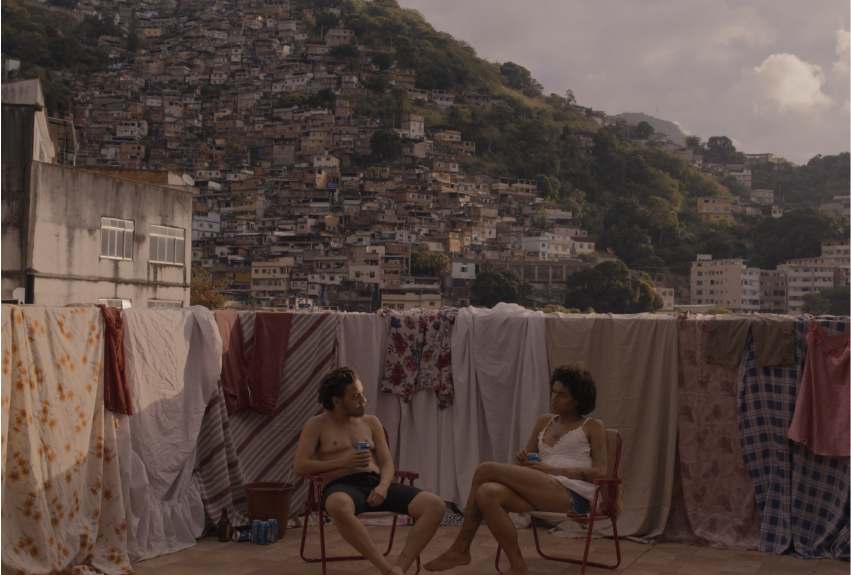
Leonardo is confident and speaks quickly, with a self-assured deep voice that sounds like it would belong to a person almost twice his age. He spills forth with an undeniable love for Rio. I had hoped we’d get to stroll through one of his favorite areas of the city and soak it up; however, he was far too busy to take me on any sort of made-for-gringo tour. I’m trying my best to forgive him.
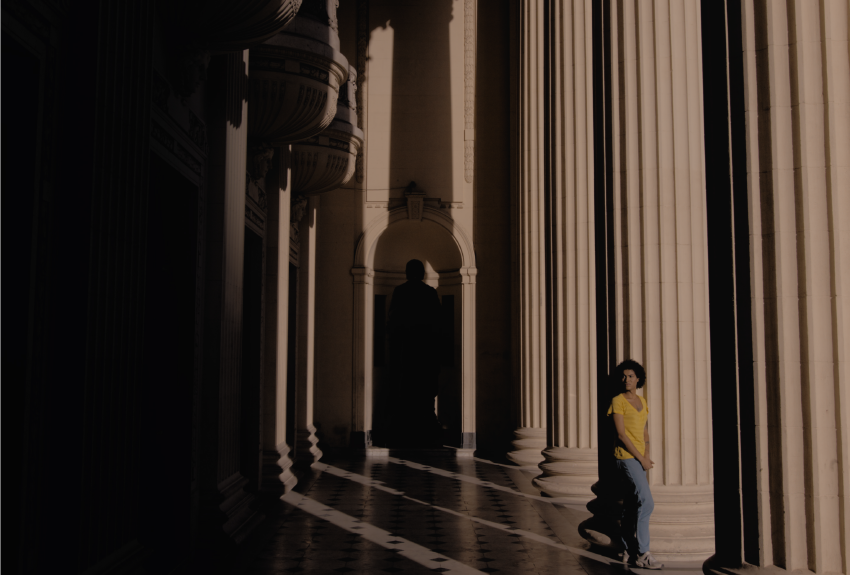
Like many would-be filmmakers, Leo’s interest in film began in childhood. “My mother would take me to the cinema,” he recalled. “I don’t think she really wanted me to be a filmmaker, but it was [inevitable]. She showed me Chaplin, Buster Keaton, and many classic films.”
Unlike most other people who dream of a career in film, however, he had access to formally study the medium from a young age. “My high school was a technical school and offered scriptwriting as a concentration,” he explained. “It immersed me in the universe of film at a very young age. At the same time, I was very interested in cameras and making images. I started experimenting by making my own short projects. I got a scholarship to study cinema at UNESA, a private university here in Rio. That’s where I started to make films I took more seriously. In 2021, I got my first grant to make a film, which was around $10,000. I ended up making Neon Phantom, so it was very little for this film that had original music, a large cast and crew, and dancing. It was very complicated to make such a big film with such a small budget.”
“Your cinematography has such a photographic quality,” I said. “Did you ever study traditional photography?”
“I worked with photography a lot in my early 20s,” he said. “I did weddings, birthdays, but I also studied painting. A lot of the principles are the same in both mediums. I try to apply these same principles of composition and light into moving images.”
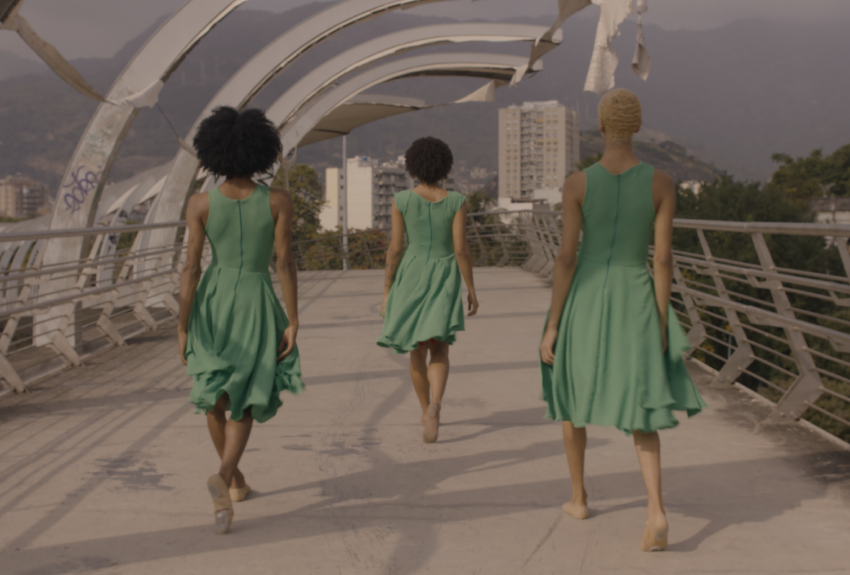
“Most films you see that are shot in Rio rely on a preset series of locations,” I said. “What made you want to not only not focus on the beaches and mountains, but almost totally omit them from your work?”
“It’s interesting to think about the different landscapes that are present in Rio de Janeiro,” he said. “It’s a city that’s so diverse in so many ways. Even for someone like me, who lives here and is from here, I still don’t know all of the landscapes. There’s so much to be discovered. It interests me to try and explore the new horizons of the city. I try to bring in the landscapes that have been present in my life. I’m from Tijuca, which is the beginning of the suburbs of Zona Norte. It’s still a very privileged area in a way, but it’s far away from Zona Sul and the famous landscapes of the city. I like showing landscapes that aren’t shown so often: Zona Norte, Centro, and also the post colonial heritage of architecture. These spaces allow us to explore the material consequences of colonization and see how it’s still present. It’s impossible not to acknowledge when you see these modern characters inhabiting these spaces.”
“It is impossible!” I said, waving my hand in the air. “I really appreciated the light touch you used in both films when it comes to social commentary. Brazil’s history of colonization and slavery is barely mentioned, but it’s also so clearly a focal point.”
“While it’s not always in the literal dialog of the characters, colonization is deeply present,” he said, in agreement.
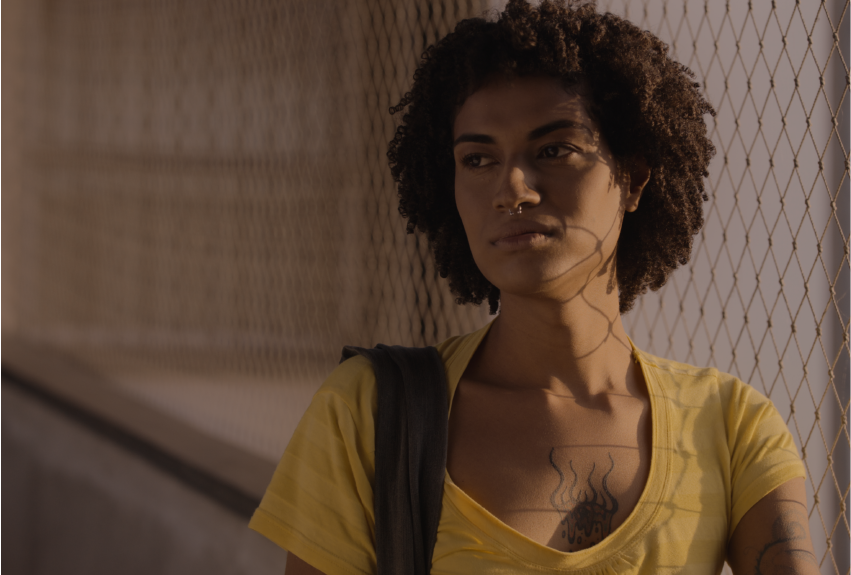
“You take this concept of featuring the overlooked and go beyond landscapes,” I said. “Your characters, too, are people that are generally overlooked. Not just because they are poor or trans or black, but because they hold positions of service within an economy that doesn’t value them.”
“I’m interested in exploring the concept of inhabiting the city,” he said. “The city itself is an organism. Who are the characters who are most affected by the city and structures? The delivery people for instance, how are they affected by the larger economy? By the gig economy? They are a new force within contemporary labor. They symbolize a non-attachment labor style. Seeing them, in the city, amongst the statues and falling apart royal buildings– you can see the consequences of colonialism. How the city, in its architecture, can still exclude people as they move through it.”
“I’m interested in exploring the concept of inhabiting the city.”
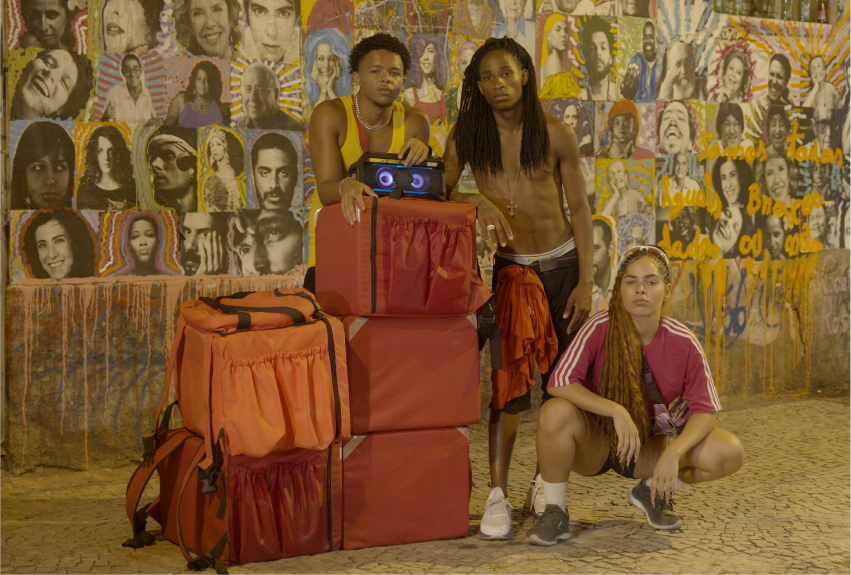
“As I knew very little going in, when seeing your films, I was surprised to find that they are both in the quasi-musical genre,” I said. “What draws you to this genre?”
“Brazil is a very musical country,” he said, laughing. “People always talk about the musical genre being unrealistic, because, ‘People don’t naturally just start dancing and singing.’ But I think that the people who say that must have never come to Brazil.” We both started laughing.
“We are a very musical people,” he continued. “Even though I’m a filmmaker, I would say that the strongest Brazilian art so far has been music. We have a very transgressive music tradition from bossa nova to funk carioca. We have reinvented the wheel when it comes to music so many times, from so many beautiful perspectives. Unfortunately, because they are so expensive and hard to make, we don’t have a lot of Brazilian musical films. I’m inspired to create this genre. I don’t think all of my films will be musicals, but they will all contain an element of musicality.”
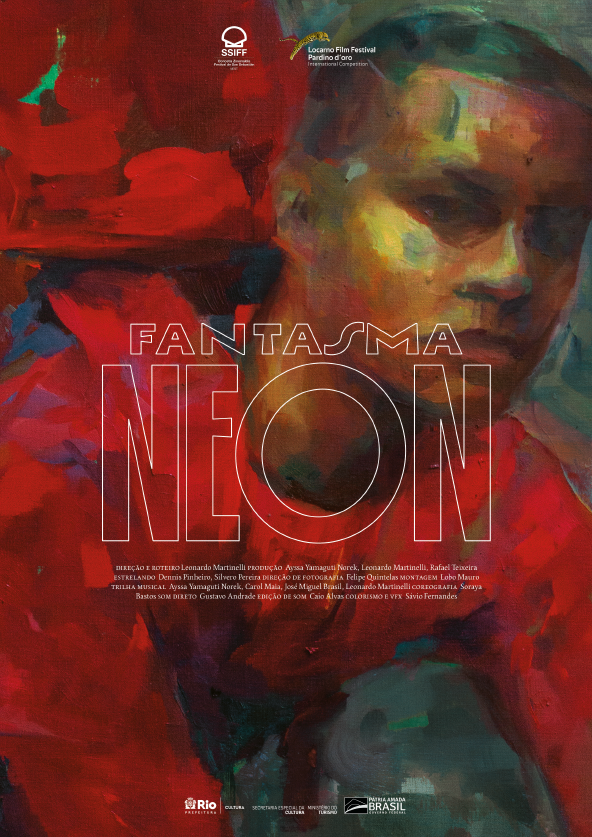
While I loved both films, as someone who worked in service for a long time, I had a stronger emotional connection to Neon Phantom. The film portrays the kafkaesque existence of food delivery drivers in the city, caught between difficult, dangerous work and starvation. With subtlety, and the majestic milieu of a musical, the film explores concepts ranging from labor issues to sexual violence.
“There’s an image in Neon Phantom, where the delivery drivers are holding instruments like they are machine guns,” I said. “Is this a statement about music being a weapon of revolution?”
“I don’t exactly like the concept of ‘weaponizing’ music,” he said with a chuckle. “But I do think music can be a tool in fomenting a message of revolution. This scene, though, is more about eliciting an immediate response from the audience in seeing these people holding these objects. If it were different people with the same objects, would the response be the same? The goal was to provoke a response that reflects the viewer’s expectations.”
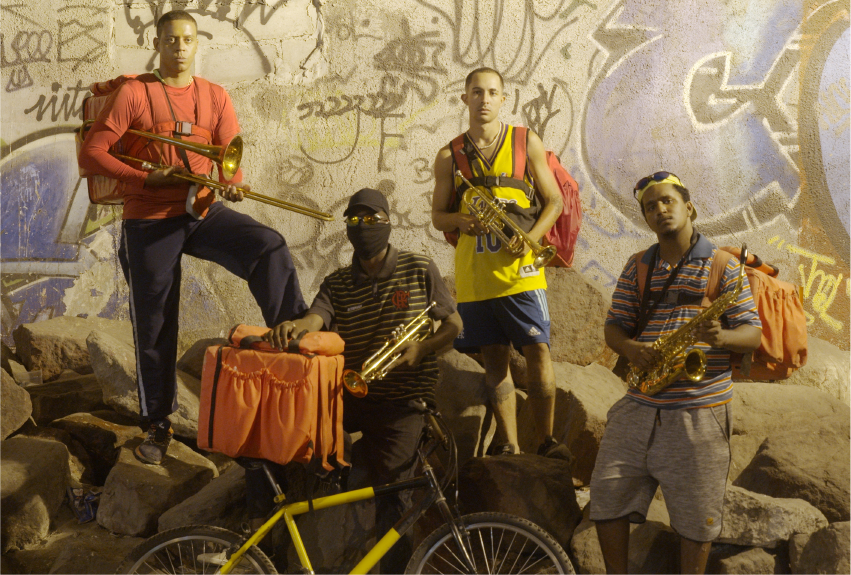
“There’s also a sequence in Neon Phantom where the delivery drivers are discussing incidents that they’ve faced on the job,” I said. “Were these taken from interviews you conducted?”
“Those were taken from research,” he explained. “I didn’t conduct the interviews myself. They were from interviews I found and from looking at people’s stories on Facebook groups. It was a compilation of stories that I read about delivery drivers during the pandemic.”
“It gave the introduction the feeling of a documentary, and then the next thing I knew everyone was dancing,” I said. “What do you think a fantastical fictitious film can do that a traditional documentary can’t in highlighting a social issue?”
“When you use fantasy in fiction to expose real issues, it makes it harder for the viewer to look away,” he said. “When you show the raw reality, it’s easier for the spectator to ignore it. Documentaries have a lot of complexity and depth, but I’m interested in using the fantastical to reconstruct and give a new perspective to reality.”
“When you use fantasy in fiction to expose real issues, it makes it harder for the viewer to look away.”
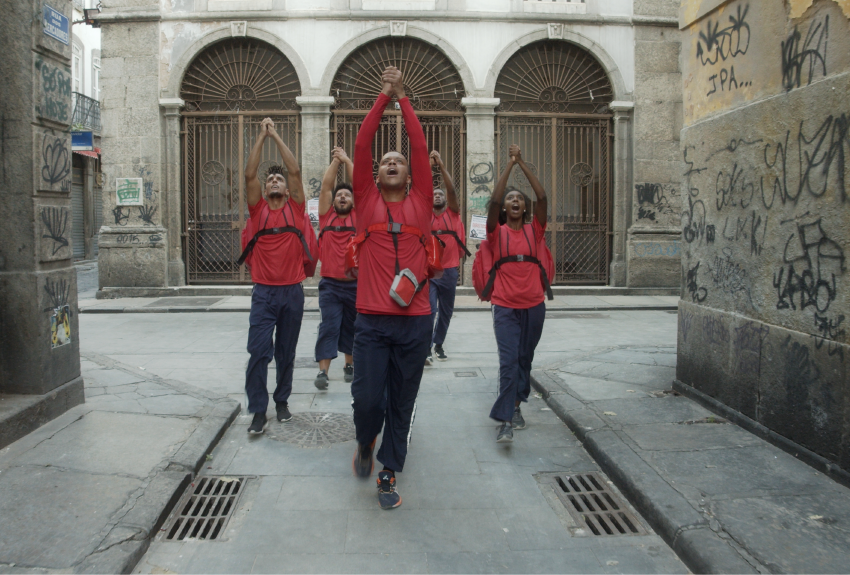
The feature film Leonardo is working on takes place in the same universe as Phantom, but with greater ambitions. “It’s a more complex expansion of the contemporary labor discussion and the gig economy,” he explained. If the short I saw was made with 10k and a dream, I can only imagine what the final product will be with a hearty budget and the support of multiple institutions.



